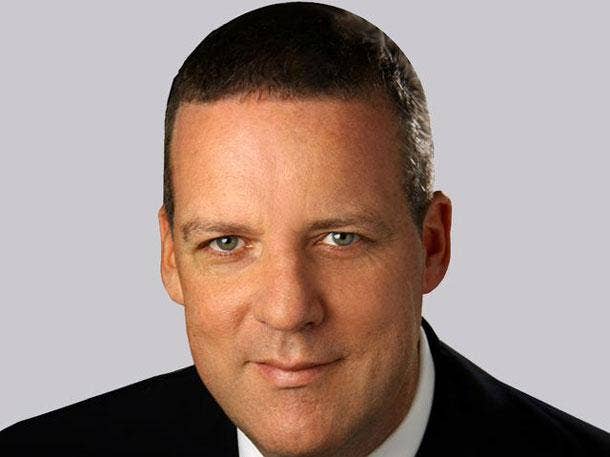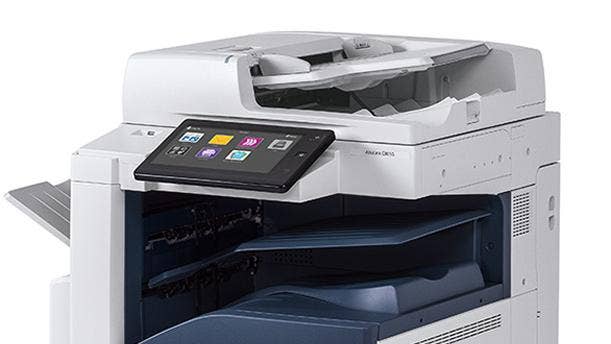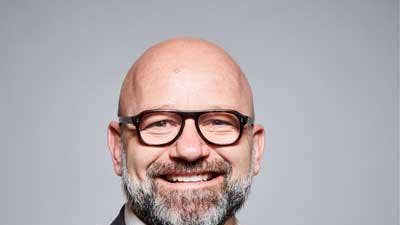5 Ways Xerox CEO John Visentin Is Reshaping The Company
While he’s only been on the job for seven months, John Visentin has shown he is not afraid to shape the American icon as he sees fit, with a relentless pace of internal consolidation and streamlining which he told employees is designed to make Xerox a “tech powerhouse.”

Xerox Lays Out Its Goals For 2019
About this time last year the future for Xerox seemed set. A $6.1 billion deal with Fujifilm was announced by then-CEO Jeff Jacobson, under which Xerox would inherit all of Fuji Xerox, the 60-year- old Asian arm of its copier empire, but cede overall control to Tokyo.
Then a proxy war with Xerox’s two largest shareholders, Carl Icahn and Darwin Deason, erupted and ensuing legal fights scrapped the deal, the CEO, and board.
Now, new CEO John Visentin, a long-time Icahn loyalist who took over the company in May, has outlined his vision on where he wants to take Xerox in 2019. On Dec. 17, he sent an internal email that described a number of structural and personnel changes he had made to streamline the company, with the stated goal of becoming a “tech powerhouse.”
From go-to market to R&D and supply, almost no part of Xerox has been untouched by his vision.
“To become a tech powerhouse, we must continue to adapt to the changing marketplace and evolving customer needs,” Visentin wrote. “We will do this by having a laser focus on our four strategic priorities: driving revenue, optimizing and simplifying our business, re-energizing our innovation engine and focusing on cash flow and increasing capital returns.”

Consolidation Across The Board
Visentin talked about the changes he had made in the seven months since taking the helm that include consolidating the operations unit under a single leader, Steve Bandrowczak, which was announced in June, and moving all hardware under Tracey Koziol, who is now responsible for the company’s entire product portfolio. Visentin also created a global team exclusively focused on software, which he called “an important future source of our growth.”
Xerox centralized business functions of HR, legal, finance, information management, delivery, strategy and marketing, “to create greater global alignment, standards of excellence, and accountability, to enhance performance across the enterprise.”
“All of these moves have shaped our organization to compete more effectively in the future,” Visentin explained in his letter. “These changes reflect a closer alignment with industry standards and the way our customers expect to buy and be serviced, making it easier for them to do business with us. At the same time, we are optimizing our operations. This will create a simpler, flatter, more agile organization that will help empower our people and make it easier to speed decisions into action on behalf of our customers, as well as create ways to work more productively.”

R&D And Strategy
Xerox, unlike its competitor HP, has not made the leap into 3D printing. While HP announced a production-scale metallic 3D printer as the future of its 3D print division, Xerox has been on the sidelines when it comes to additive manufacturing. The company has also not tried its hand at consumer maker products like rival Brother, that offers electric fabric and paper cutting machines for hobbyists.
Visentin has talked previously about the impressive work he saw at PARC, the company’s R&D center in Webster, N.Y. and the importance of the company’s “innovation engine.”
In his December letter, Visentin said the company’s chief technology officer, Steve Hoover, is focused “on enhancing our innovation capabilities and improving the way we monetize what we create.” However, no products or announcements were teased.
Meanwhile, M&A does seem to be on the table, since Visentin said Senior Vice President and Chief Strategy and Marketing Officer Farooq Muzaffar is “working to identify acquisitions that will complement and extend our existing capabilities into new areas, while rebranding Xerox to tell our transformation story to our stakeholders.”

Go-to-Market
“In order to strengthen our relationships with our customers and partners and enhance revenue growth, we will address our markets via two new regions,” Visentin wrote.
Visentin has stitched the Americas together in one unit led by Mike Feldman, who will now oversee U.S., Canada, Mexico, Central and South America. Meanwhile Herve Tessler, president of international operations, will lead the company’s EMEA sales, in Europe, the Middle East, Africa and India.
While Visentin has previously threatened to pull out of the decades-long relationship with Fuji Xerox and go it alone selling copiers, printers and MFPs in Asia –after Fujifilm filed a $1 billion breach of contract suit last summer -- his recent moves to change the company’s go-to market operations, do not make good on that talk.
For channel partners, the changes mean a more streamlined path to reach the top, with two layers being removed. Pete Peterson, president of Xerox Channels, has left the company, while Darren Cassidy, who sat below Peterson, was moved to head of global supplies. Now partners will report to Rose Willis, a 20-year Xerox sales veteran, who will lead the U.S. agent team, and she will report to Feldman.
Meanwhile, Visentin has also created a new U.S. group for driving production products through all routes to market and placed that under Sean Hickey, a senior vice president who has climbed the ranks at Xerox since 1996, according to LinkedIn.
“This new, more market-relevant way of organizing will open greater opportunities to enhance our customer experience,” Visentin wrote.

Global Delivery
Visentin said the company’s delivery function will now operate on a “common global delivery model” with the goal of creating a consistent customer experience, promote customer loyalty and create greater revenue opportunities for Xerox world-wide.
“The new global organization creates a unified platform for delivering world-class services, with a common, streamlined structure, standard metrics and reporting, and consistent solution design aligned to our capabilities,” he wrote. “This simpler, more agile way of operating will make it easier for our people to do what’s right for our customers – deliver great service and create greater customer value.”
To oversee this, Visentin brought in Mary McHugh from Oracle. McHugh – who had been Oracle’s senior vice president of SaaS Implementation Success management and SaaS Consulting for North America -- took the job in June. Like Bandrowczak, she is also an HPE vet, where she was the senior vice president of Global Solution Design and Delivery.

Supply Chain
Visentin is also optimizing Xerox’s supply chain to better serve its customers and invest in the company’s growth, he said.
“We are focused on driving profitable growth of our supplies revenue—particularly on sold supplies and contracted supplies activities,” he wrote.
Visentin moved Darren Cassidy (pictured) from president of U.S. channels group, to a new role as head of global supplies. Cassidy, who had reported to Peterson, now reports to Fred Beljaars, chief supply chain officer at Xerox.